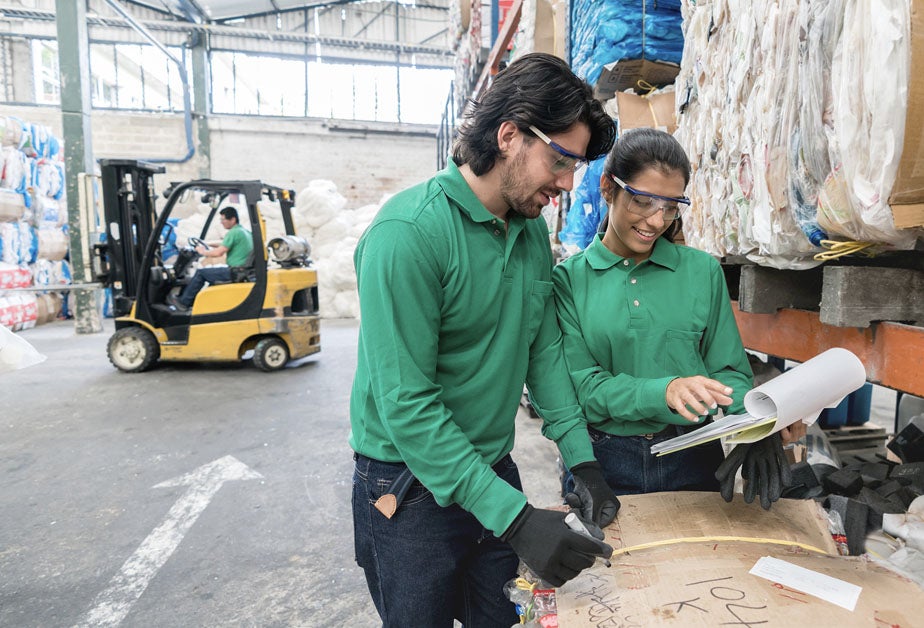The European Commission has proposed a new regulation to replace the existing Directive on Packaging and Packaging Waste 94/62/EC, which no longer adequately addresses accelerating trends in EU packaging waste generation.
The EU Packaging Regulation proposal has three main objectives:
- Prevent packaging waste by reducing the amount of packaging in the EU market
- Boost high-quality (“closed loop”) recycling and make all packaging recyclable in an economically viable way by 2030
- Reduce the need for virgin materials in packaging with mandatory targets for recycled content, and foster a market for secondary materials
The change from directive to regulation in the proposal also means it would become law in all EU member states if adopted, applying to all packaging and all packaging waste in the EU. There are currently no exemptions outlined for specific types of materials, or for industrial or business entities included in the proposal.
In addition, the proposed regulation includes new requirements for clear waste handling instructions for end users and empowers the European Commission to impose further restrictions on substances of concern in packaging.
Let’s take a deeper look at what this proposal means for you…
EU Waste Prevention Requirements for Businesses
The European Commission has set a target to reduce packaging waste by 15% per capita per member state by 2040, compared to levels in 2018. To help achieve this goal, businesses will be required to ensure packaging weight and volume is reduced to the minimum necessary for ensuring functionality, and to eliminate unnecessary packaging such as single-use wrapping for fruits and vegetables or miniature shampoo bottles.
Additionally, the promotion of reusable and refillable packaging solutions will support waste reduction targets, with requirements on businesses to offer a certain percentage of their products to consumers in reusable or refillable packaging. These target percentages will increase over time between 2030 and 2040.
Businesses with products on the EU market will need to evaluate their packaging and many will likely need to redesign it to meet waste minimization criteria. For businesses more reliant on single-use packaging, greater collaboration with consumers will be required to ensure a steady flow of goods.
Managing Substances of Concern in Packaging
The existing Packaging and Packaging Waste Directive focuses on four heavy metals — lead, cadmium, mercury, and hexavalent chromium — as substances of concern that may be released into the environment during the processing of the packaging waste. While the proposed regulation maintains the current standards for a maximum allowable concentration level of 0.01% weight by weight (w/w), Article 6 empowers the European Commission to impose restrictions on substances of concern in packaging that negatively affect the reuse and recycling of materials in the packaging. This means businesses will need to monitor and manage the material composition of their packaging against an evolving list of substances. In addition, compliance with the restrictions must be demonstrated with a technical file, similar to the technical file required under the RoHS Directive 2011/65/EU.
Assent’s supply chain sustainability management platform gives you better transparency into the materials coming from your supply chain. Download our guide, Digital Transformation & Transparency: A Guide to Mitigating Supply Chain Risk, to learn how.
Mandatory Design for the Environment
Not only will businesses need to reduce the quantity of packaging used — the proposed regulation empowers the European Commission to lay down “design for recycling” criteria and recyclability performance grades for plastic, paper, metal, and glass packaging materials. The aim is to make all packaging placed on the EU market recyclable by 2030. The recycling process for materials must also be economically viable under the EU’s Circular Economy Action Plan — meaning materials that require highly-specialized or expensive recycling processing will not meet regulatory requirements.
Plastic packaging will also have mandatory rates of recycled content with specific targets for 2030 and 2040. This requirement aims to support the growth of a circular economy for secondary raw materials, redirecting plastic from landfills. Member states will also be required to create deposit return systems for plastic bottles and aluminum cans, facilitating the flow of recycled plastic and metal throughout their entire lifecycle.
Businesses will have to redesign their packaging to ensure that it meets the recyclability performance grades by 2030. Anyone using plastic in their packaging will need to update their supply chain to procure recycled raw plastic. Businesses will benefit from being proactive in sourcing recyclable materials ahead of demand.
In addition, the new regulation proposes to obligate businesses to update labeling with a QR code that provides consumers with information about the packaging’s material composition, reusability, and waste stream category (such as paper, plastic, composites, metal, and glass). Member states will have to ensure that all waste collection containers for packaging waste are marked with the corresponding waste stream category label, which will be standardized across the entire EU. The European Commission’s aim is to make choosing a waste stream for recyclable packaging simple for consumers, thereby spurring a reliable inflow of recyclable material feeding the circular economy.
Your EU Packaging & Packaging Waste Action Plan
This proposed regulation does more than set stricter reduction targets — it creates new requirements to put a plastics and paper circular economy in motion. If adopted, businesses will need to rapidly adapt to this new ecosystem, ensuring their packaging design both buys materials from and supplies materials into it.
Here are our recommendations on getting prepared to make sure that you are ready when the regulation is adopted as EU law:
- Assess your current packaging and determine the base minimum packaging for safe transport and functionality. Eliminate everything else.
- If your business uses single-use packaging, it’s time to rethink your business model. Develop product offerings that meet the requirements of the proposed regulation and consult with current affected buyers on strategies to assure business continuity.
- Evaluate current recycled content percentage of your plastic packaging and initiate a redesign process to ensure that minimum levels of recycled content are achieved by 2030.
- Once the European Commission publishes the “design for recycling” criteria and recyclability performance grades, determine how you need to redesign your packaging in order to achieve the recyclability targets by 2030.
- Update procurement policies to reflect the new design of your packaging materials.
- Implement a system to trace substances of concern in your supply chain. Establish a monitoring practice to keep up with any new substances added by the European Commission.
- Align packaging labeling with finalized requirements.
Get in touch with Assent to learn more and get a demo of how our platform and regulatory monitoring services give you deeper insights into your supply chain and regulatory risks, Contact us.










